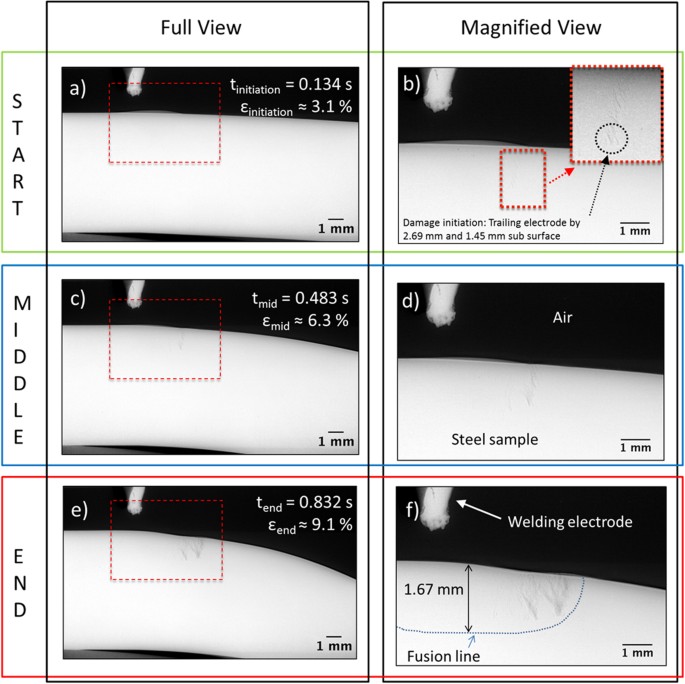While True: Learn() Crack
Convert a collection of raw documents to a matrix of TF-IDF features.
Equivalent to CountVectorizer followed byTfidfTransformer.
Contact 1058 Capitol Way S. Olympia, WA 98501 Phone: (360) 529-5310 Email: tvw@tvw.org. Mar 29, 2019 To crack a safe, start by using a stethoscope to listen to the safe as you turn the dial, which will help you determine how many numbers are in the combination. Then, continue to rotate the dial and write down the numbers it lands on whenever you hear 2 clicks close to each other.
Read more in the User Guide.

If ‘filename’, the sequence passed as an argument to fit isexpected to be a list of filenames that need reading to fetchthe raw content to analyze.
If ‘file’, the sequence items must have a ‘read’ method (file-likeobject) that is called to fetch the bytes in memory.
Otherwise the input is expected to be a sequence of items thatcan be of type string or byte.
If bytes or files are given to analyze, this encoding is used todecode.
Instruction on what to do if a byte sequence is given to analyze thatcontains characters not of the given encoding. By default, it is‘strict’, meaning that a UnicodeDecodeError will be raised. Othervalues are ‘ignore’ and ‘replace’.
Remove accents and perform other character normalizationduring the preprocessing step.‘ascii’ is a fast method that only works on characters that havean direct ASCII mapping.‘unicode’ is a slightly slower method that works on any characters.None (default) does nothing.
Both ‘ascii’ and ‘unicode’ use NFKD normalization fromunicodedata.normalize.
Convert all characters to lowercase before tokenizing.
Override the preprocessing (string transformation) stage whilepreserving the tokenizing and n-grams generation steps.Only applies if analyzerisnotcallable.
Override the string tokenization step while preserving thepreprocessing and n-grams generation steps.Only applies if analyzer'word'.
Whether the feature should be made of word or character n-grams.Option ‘char_wb’ creates character n-grams only from text insideword boundaries; n-grams at the edges of words are padded with space.
If a callable is passed it is used to extract the sequence of featuresout of the raw, unprocessed input.
Since v0.21, if input is filename or file, the data isfirst read from the file and then passed to the given callableanalyzer.
If a string, it is passed to _check_stop_list and the appropriate stoplist is returned. ‘english’ is currently the only supported stringvalue.There are several known issues with ‘english’ and you shouldconsider an alternative (see Using stop words).
If a list, that list is assumed to contain stop words, all of whichwill be removed from the resulting tokens.Only applies if analyzer'word'.
If None, no stop words will be used. max_df can be set to a valuein the range [0.7, 1.0) to automatically detect and filter stopwords based on intra corpus document frequency of terms.
Regular expression denoting what constitutes a “token”, only usedif analyzer'word'. The default regexp selects tokens of 2or more alphanumeric characters (punctuation is completely ignoredand always treated as a token separator).
The lower and upper boundary of the range of n-values for differentn-grams to be extracted. All values of n such that min_n <= n <= max_nwill be used. For example an ngram_range of (1,1) means onlyunigrams, (1,2) means unigrams and bigrams, and (2,2) meansonly bigrams.Only applies if analyzerisnotcallable.
When building the vocabulary ignore terms that have a documentfrequency strictly higher than the given threshold (corpus-specificstop words).If float in range [0.0, 1.0], the parameter represents a proportion ofdocuments, integer absolute counts.This parameter is ignored if vocabulary is not None.
When building the vocabulary ignore terms that have a documentfrequency strictly lower than the given threshold. This value is alsocalled cut-off in the literature.If float in range of [0.0, 1.0], the parameter represents a proportionof documents, integer absolute counts.This parameter is ignored if vocabulary is not None.
If not None, build a vocabulary that only consider the topmax_features ordered by term frequency across the corpus.
This parameter is ignored if vocabulary is not None.
Either a Mapping (e.g., a dict) where keys are terms and values areindices in the feature matrix, or an iterable over terms. If notgiven, a vocabulary is determined from the input documents.
If True, all non-zero term counts are set to 1. This does not meanoutputs will have only 0/1 values, only that the tf term in tf-idfis binary. (Set idf and normalization to False to get 0/1 outputs).
Type of the matrix returned by fit_transform() or transform().
Each output row will have unit norm, either:* ‘l2’: Sum of squares of vector elements is 1. The cosinesimilarity between two vectors is their dot product when l2 norm hasbeen applied.* ‘l1’: Sum of absolute values of vector elements is 1.See preprocessing.normalize.
Enable inverse-document-frequency reweighting.
Smooth idf weights by adding one to document frequencies, as if anextra document was seen containing every term in the collectionexactly once. Prevents zero divisions.
Apply sublinear tf scaling, i.e. replace tf with 1 + log(tf).
A mapping of terms to feature indices.
True if a fixed vocabulary of term to indices mappingis provided by the user
The inverse document frequency (IDF) vector; only definedif use_idf is True.
Terms that were ignored because they either:
occurred in too many documents (
max_df)occurred in too few documents (
min_df)were cut off by feature selection (
max_features).
This is only available if no vocabulary was given.
See also
CountVectorizerTransforms text into a sparse matrix of n-gram counts.
TfidfTransformerPerforms the TF-IDF transformation from a provided matrix of counts.
Notes
The stop_words_ attribute can get large and increase the model sizewhen pickling. This attribute is provided only for introspection and canbe safely removed using delattr or set to None before pickling.
Examples
Methods
| Return a callable that handles preprocessing, tokenization and n-grams generation. |
| Return a function to preprocess the text before tokenization. |
| Return a function that splits a string into a sequence of tokens. |
| Decode the input into a string of unicode symbols. |
| Learn vocabulary and idf from training set. |
| Learn vocabulary and idf, return document-term matrix. |
| Array mapping from feature integer indices to feature name. |
| Get parameters for this estimator. |
| Build or fetch the effective stop words list. |
| Return terms per document with nonzero entries in X. |
| Set the parameters of this estimator. |
| Transform documents to document-term matrix. |
__init__(*, input='content', encoding='utf-8', decode_error='strict', strip_accents=None, lowercase=True, preprocessor=None, tokenizer=None, analyzer='word', stop_words=None, token_pattern='(?u)bww+b', ngram_range=(1, 1), max_df=1.0, min_df=1, max_features=None, vocabulary=None, binary=False, dtype=<class 'numpy.float64'>, norm='l2', use_idf=True, smooth_idf=True, sublinear_tf=False)[source]¶
Initialize self. See help(type(self)) for accurate signature.
build_analyzer()[source]¶Return a callable that handles preprocessing, tokenizationand n-grams generation.
A function to handle preprocessing, tokenizationand n-grams generation.
build_preprocessor()[source]¶
Return a function to preprocess the text before tokenization.
A function to preprocess the text before tokenization.
build_tokenizer()[source]¶Return a function that splits a string into a sequence of tokens.
A function to split a string into a sequence of tokens.
decode(doc)[source]¶Decode the input into a string of unicode symbols.
The decoding strategy depends on the vectorizer parameters.
The string to decode.
A string of unicode symbols.
fit(raw_documents, y=None)[source]¶Learn vocabulary and idf from training set.
An iterable which yields either str, unicode or file objects.
This parameter is not needed to compute tfidf.
Fitted vectorizer.
fit_transform(raw_documents, y=None)[source]¶Learn vocabulary and idf, return document-term matrix.
This is equivalent to fit followed by transform, but more efficientlyimplemented.
An iterable which yields either str, unicode or file objects.
This parameter is ignored.
Tf-idf-weighted document-term matrix.
get_feature_names()[source]¶Array mapping from feature integer indices to feature name.
A list of feature names.
get_params(deep=True)[source]¶Get parameters for this estimator.

If True, will return the parameters for this estimator andcontained subobjects that are estimators.
While True Learn
Parameter names mapped to their values.
get_stop_words()[source]¶Build or fetch the effective stop words list.
A list of stop words.
inverse_transform(X)[source]¶Return terms per document with nonzero entries in X.
Document-term matrix.
While True: Learn() Crack Key
List of arrays of terms.
set_params(**params)[source]¶Set the parameters of this estimator.
The method works on simple estimators as well as on nested objects(such as pipelines). The latter have parameters of the form<component>__<parameter> so that it’s possible to update eachcomponent of a nested object.
While True: Learn() Crack Ms Office
Estimator parameters.
Estimator instance.
transform(raw_documents, copy='deprecated')[source]¶Transform documents to document-term matrix.
Uses the vocabulary and document frequencies (df) learned by fit (orfit_transform).
An iterable which yields either str, unicode or file objects.
Whether to copy X and operate on the copy or perform in-placeoperations.
Deprecated since version 0.22: The copy parameter is unused and was deprecated in version0.22 and will be removed in 0.24. This parameter will beignored.
Tf-idf-weighted document-term matrix.
